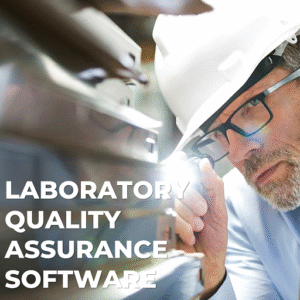Upgrading from Excel to Dedicated Quality Control Software

Introduction
For years, many organizations have relied on spreadsheets to manage product quality. While Excel offers flexibility, it often falls short when handling complex processes, multiple users, and compliance needs. Upgrading from Excel to Dedicated Quality Control Software ensures accuracy, saves time, and improves overall efficiency. Businesses that make the switch gain real-time visibility, automated workflows, and a stronger foundation for meeting regulatory and customer requirements.
Limitations of Excel in Quality Control
-
Error-Prone: Manual data entry increases the risk of mistakes.
-
Lack of Traceability: Difficult to maintain audit trails for compliance.
-
Scalability Issues: Hard to manage when data grows across multiple teams.
-
No Automation: Time-consuming to track corrective actions or approvals.
-
Data Silos: Sharing and collaboration remain challenging.
Why Dedicated Quality Control Software is the Smarter Choice
1. Centralized Data Management
All records, test results, and reports are stored in a unified system accessible to authorized users.
2. Automated Workflows
From sampling plans to CAPA processes, automation reduces manual effort and ensures consistency.
3. Real-Time Monitoring
Quality metrics, deviations, and corrective actions are tracked in real-time.
4. Regulatory Compliance
Built-in features like audit trails, electronic signatures, and documentation simplify compliance with ISO, FDA, and GxP requirements.
5. Advanced Analytics
Dashboards and reports reveal patterns, highlight risks, and support better decision-making.
Key Benefits of Upgrading
-
Higher Accuracy – Eliminate data entry errors common in spreadsheets.
-
Improved Collaboration – Teams work together seamlessly on a shared platform.
-
Faster Approvals – Automated notifications reduce delays.
-
Better Compliance – Maintain records easily for audits and inspections.
-
Scalable Solution – Software grows with your organization’s needs.
Real-World Impact
-
Manufacturing: Automated inspection records reduce rework and waste.
-
Pharma & Life Sciences: Ensures GxP compliance and complete traceability.
-
Food Industry: Tracks testing results to maintain safety and certification standards.
-
Chemical Industry: Improves documentation and monitoring of quality-sensitive processes.
Conclusion
Relying on Excel for quality control may have worked in the past, but today’s demands require precision and scalability. Upgrading from Excel to Dedicated Quality Control Software transforms quality management into a proactive, efficient, and compliant system. By moving beyond spreadsheets, organizations improve accuracy, empower collaboration, and ensure long-term success.
QHSE SOFTWARE SOLUTION
Laboratory Quality Assurance Software
QC Plans of Laboratory Quality Assurance Software
Features of Laboratory Quality Assurance Software
Benefits of Laboratory Quality Assurance Software
Support for Laboratory Quality Assurance Software
FREE demo of Laboratory Quality Assurance Software
CONTACT
Akshar Management Consultant
+91-9909979870
